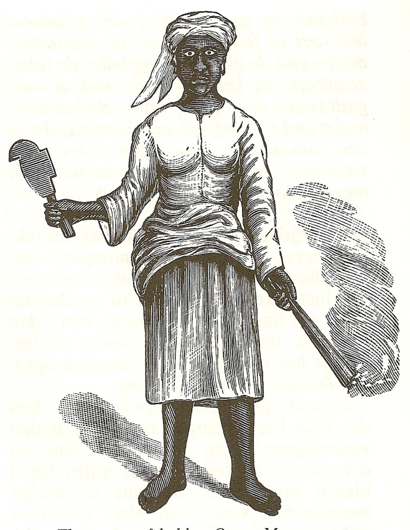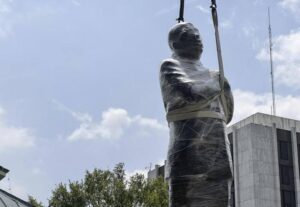Throughout the 17th and 18th centuries, lots of people kidnapped from Africa were forced into slavery in the American colonies and exploited to work as servants and labor in the production of crops and livestock.
However, after the abolition of slavery in 1848, a new labor bill was passed in 1849 to regulate the conditions of the now free workers. The law specified a day wage and ruled that workers could only change jobs once a year, on October 1st.
This law fixed salaries and labor conditions for all plantation workers and prohibited bargaining for better wages or work conditions.
This made plantation work unattractive, and many workers opted to leave the plantations and the islands to seek better conditions elsewhere. The government at that time reacted to the labor shortage by making it harder for workers to leave the islands; They demanded health certificates and charged fees for passports.
30 years later, workers could now bargain for their wages. But it was another difficult hurdle, as their offers were denied, and new harsh conditions for traveling were imposed.
This resulted in the Fireburn riots, the largest labor riot in Danish history. In this article, you’d get to know all about the Fireburn riot in detail
Fireburn The Uprising
On October 1st, 1878, many of the workers on St. Croix gathered in Frederiksted to drink and celebrate their move in standing up for their rights as humans.

However, this celebration was cut short, when the police took a brutal clampdown on the streets, sending a farm laborer called Henry Trotman to hospital. The violence continued, and rumors spread that Henry Trotman had died as a result of police brutality.
Although news later spread that Henry Trotman wasn’t dead, the police and military had to retreat to the fort in Frederiksted to escape the furious masses.
The angry workers started to charge at the fort but were unable to penetrate its defenses. A horseman was dispatched to the town of Christiansted at the other end of St. Croix to alert the colonial powers and request assistance. However, his journey wasn’t fruitful as buildings in Frederiksted were set on fire, and shops were looted later that night.
The following morning, soldiers came from Christiansted to rescue the fort, but the torching of fields and plantation property on St. Croix continued throughout the day. Around 50 plantations and most of Frederiksted was destroyed by fire, which is what gave the revolt its name Fireburn.
Queen Mary
The three women who participated in the rebellion have gone down in history as a symbol of resistance to colonial power in the West Indies. The women are known as Queen Mary, being the leader of the uprising, alongside Queen Agnes and Queen Mathilda.
Her Biography
Mary Thomas, known as Queen Mary, (ca. 1848–1905) was one of the leaders of the 1878 “Fireburn” labor riot, or uprising, on the island of St. Croix in the Danish West Indies.
Mary Thomas hails from Antigua and arrived in St. Croix in the 1860s to take work on the plantations on the island. She resided at the Sprat Hall on a plantation in 1878. Though Mary had three children she never was married.
Before the uprising, she had been sentenced to theft and for mistreating her children. Historians think that such sentences were used by the authorities to discredit people who opposed the authorities.
Because of her role as a leader during the uprising, Mary Thomas came to be known as “Queen Mary”. The workers chose her and two other women, “Queen Agnes” and “Queen Matilda”, as queens to perform the ritual and celebratory functions during the uprising.
Thomas played a leading role and referred to herself as a “captain” in the rebellion. Allegedly, during one of the uprisings, Thomas had called for those unwilling to participate to be decapitated.
She was arrested and tried with other leaders of the labor uprising. During the trial of the labor leaders, she gave witness testimony against another leader, Thomas Graydon, also known as “Colonel Peter”, who was sentenced to death.
Mary Thomas was also sentenced to death for arson and looting but had her sentence commuted to life imprisonment. She was transferred to Copenhagen and placed at Women’s Prison, Christianshavn, in 1882, but in 1887 she was sent back to Christiansted, St. Croix, to serve the remainder of her sentence.
Queen Mary’s Legacy
- Mary Thomas obtained semi-mythical status in the Virgin Islands oral tradition, where a popular song commemorates her actions in the uprising:
“Queen Mary, ah where you gon’ go burn? Queen Mary, ah where you gon’ go burn? Don’ ask me nothin’ t’allJust get me de match an oil basin Jailhouse, ah deh de money dey”[7]
- The Queen Mary Highway on St. Croix is named after her.
- In 2018, two magnificent artists named Jeannette Ehlers and La Vaughn Belle created a monumental public sculpture, Am Queen Mary. The Sculpture depicted 7 meters (23 ft)-tall statue of Mary Thomas seated on a throne wielding a torch and a cane knife. The statue was revealed in Copenhagen in 2018; it is Denmark’s first public monument to a Black woman.
- A book titled Fireburn The Screenplay: A story of a passion ignited, based on the history of St. Croix written by Caribbean-American writer Angela Golden Bryan was published in 2018. The book pays tribute to Queen Mary and other leaders of the revolt.



